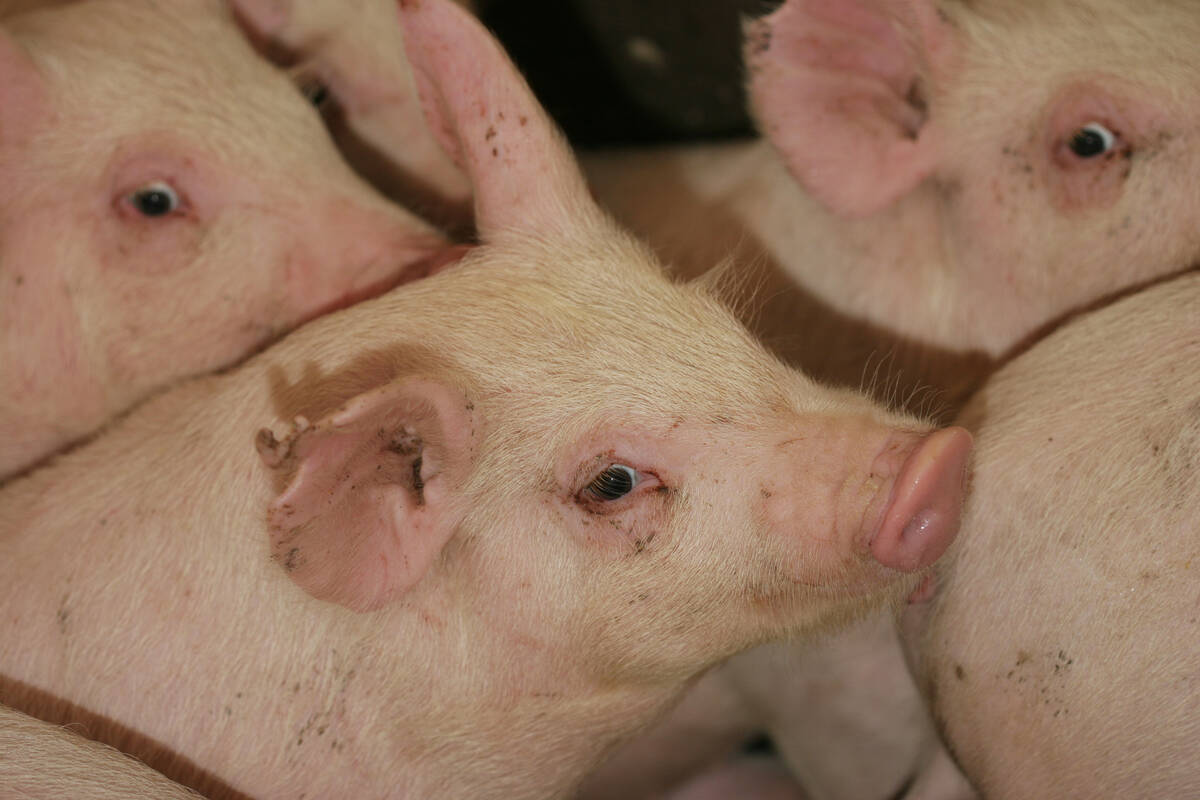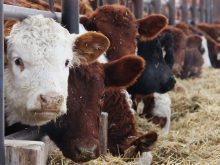As everyone knows, it’s not easy to tout Ford trucks without bashing Chevy, but Janna Rémond does a fine job of walking the diplomatic tightrope when she compares Jersey cattle to Holsteins.
“We switched completely over to Jerseys in 2004 …. We found that because we’re a family operation it was easier for our kids to help with the animals,” said Rémond, who runs a 95-cow dairy near Grunthal, Man., with her husband, Alain.
Jerseys are a smaller animal, and consequently, easier to manoeuvre.
Read Also

The Western Producer Livestock Report – September 25, 2025
The U.S. national live price average for barrows and gilts was $81.21 Sept. 17. It was $78.37 Sept. 9. U.S. hogs averaged $106.71 on a carcass basis Sept. 17, up from $106.10 Sept. 9.
“We didn’t have problems with the Holsteins, but when we were milking Holsteins, if one didn’t want to go in (to a stall), there was physically nothing I could do,” she said.
“With the Jerseys … I’m able to do more …. The calves are so much smaller, if a calf is born out in the field, I’m capable of picking it up and carrying it.”
Rémond was so taken by Jerseys that she decided to join the national association for the breed, Jersey Canada. After serving on the board for several years, Rémond became president in 2008.
As part of her new role she is one of the lead organizers for Jersey Canada’s annual meeting, which will be held in Saskatoon April 22-24, in conjunction with the Western Canada Livestock Expo.
The Saskatoon event will make history for the association because it will be the first Jersey Canada annual meeting ever held in Saskatchewan.
Adrian Hani, president of Jersey West, the association’s western Canadian division, said it’s a perfect time for Saskatchewan to host the meeting.
“Since 2001, the number of milk-recorded dairy herds in Saskatchewan containing Jerseys has increased by 100 percent,” said Hani of Didsbury, Alta.
However, the renaissance of Jerseys has not been limited to Saskatchewan. According to Jersey Canada statistics, the number of milk-recorded herds in Canada containing the breed has grown to 1,092 in 2008 from 607 in 2001.
The jump in Jersey numbers on Canadian dairy farms may be due, in part, to producers like Rémond who like working with the breed. But more likely, it’s connected to a switch to milk component pricing in the 1990s.
Before the change, producers were paid for the butterfat in milk. Now, the price is based on the amount of protein, fat and other solids in the milk.
Jerseys, according to U.S. Department of Agriculture statistics, produce 3.8 percent protein and 4.9 percent fat, compared to the Holstein 3.2 percent protein and 3.7 percent fat. Consequently, demand for Jerseys soared after the pricing change.
“A lot of people said, ‘I’ve got to have more solids in my milk, I’ve got to have more fat and protein,’ ” said Russell Gammon, executive secretary for Jersey Canada.
A side benefit of the Jersey boom in Canada, Rémond added, is that more western Canadian youth are now curious about the breed.
“A lot of the kids in 4-H have been looking for Jersey calves the last few years,” she said.
To harness that interest, Jersey Canada will host two youth events at its annual meeting in Saska-toon.
“This is our first year that we’re incorporating a youth program,” Rémond noted, for those 18 and younger.
As well, the association is planning a conference for young adults in Saskatoon, focusing on the next generation of dairy farmers.
Attracting more youth to the industry has been a priority for Rémond since she joined Jersey Canada.
“I’ve always been involved in the youth committee because we had children that age,” said Rémond, who has four kids younger than 20.
While she’s not sure if her kids will take over the family dairy, there is hope.
“I don’t know if anyone will continue … but it’s actually two of our daughters who might be more inclined to stay on the farm. And you never know, there might be a son-in-law that comes along.”















